I have to get the contents of a table image using python and OpenCV.
Image is as follows, Lecturer detail table with lecturer name, subject code: 
I need to get the text of the each row. For example:

My current implementation (up to splitting the rows of the table) is as follows:
import cv2
import numpy as np
cropped_Image_Location = "/home/shakya/Desktop/Paramore/CM_bot/timeTableDetails/Cropped/"
segmentCount = 0
img = cv2.imread(cropped_Image_Location+"cropped_5.jpg")
edges = cv2.Canny(img,50,150,apertureSize = 3)
cv2.imwrite('edges-50-150.jpg',edges)
minLineLength = 100
lines = cv2.HoughLinesP(image=edges, rho=1, theta=np.pi/10, threshold=200, lines=np.array([]), minLineLength= minLineLength, maxLineGap=100)
a,b,c = lines.shape
for i in range(a):
cv2.line(img, (lines[i][0][0], lines[i][0][1]), (lines[i][0][2], lines[i][0][3]), (0, 0, 255), 3, cv2.LINE_AA)
small = cv2.cvtColor(img, cv2.COLOR_BGR2GRAY)
kernel = cv2.getStructuringElement(cv2.MORPH_ELLIPSE, (3, 3))
grad = cv2.morphologyEx(small, cv2.MORPH_GRADIENT, kernel)
_, bw = cv2.threshold(grad, 0.0, 255.0, cv2.THRESH_BINARY | cv2.THRESH_OTSU)
kernel = cv2.getStructuringElement(cv2.MORPH_RECT, (9, 1))
connected = cv2.morphologyEx(bw, cv2.MORPH_CLOSE, kernel)
# using RETR_EXTERNAL instead of RETR_CCOMP
_,contours, hierarchy = cv2.findContours(connected.copy(), cv2.RETR_EXTERNAL, cv2.CHAIN_APPROX_NONE)
mask = np.zeros(bw.shape, dtype=np.uint8)
for idx in range(len(contours)):
x, y, w, h = cv2.boundingRect(contours[idx])
mask[y:y+h, x:x+w] = 0
cv2.drawContours(mask, contours, idx, (255, 255, 255), -1)
r = float(cv2.countNonZero(mask[y:y+h, x:x+w])) / (w * h)
if r > 0.45 and w > 8 and h > 8:
cv2.rectangle(small, (x, y), (x+w-1, y+h-1), (0, 255, 0), 1)
crop_img = small[y:y + h, x:x + w]
segmentCount = segmentCount + 1
imageNumber = str(segmentCount)
cv2.imwrite(cropped_Image_Location+"Lecturer_cropped_" + imageNumber+".jpg", crop_img)
cv2.imwrite(cropped_Image_Location+'lectureAll.jpg', small)
cv2.waitKey(0)
cv2.destroyAllWindows()
I'm stuck with splitting the cells of a row.